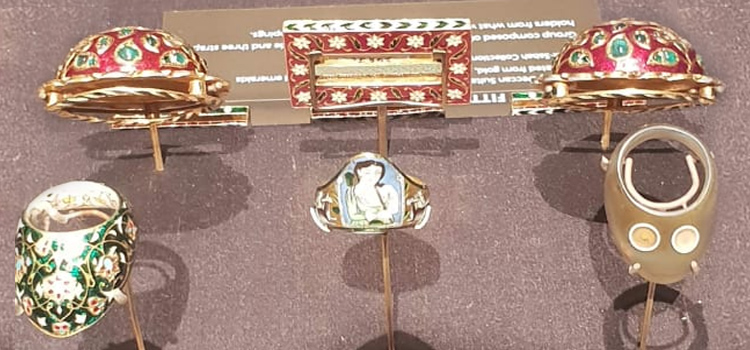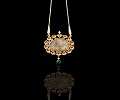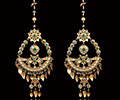An Expert's Guide To Enamelled Jewellery
Jewellery in India comes in various designs and patterns and speaks a great deal about intrinsic craftsmanship and artistry. In jewellery, enamel is a decorative coating on the metal for increasing its elegance and charm.
Enamel designs can be traced back to ancient Persians, and this art was famously known as Meenakari work. It was brought to India by Mughals in the 17th century. The intrinsic craft then caught the attention of Raja Mansingh of Ajmer, and he subsequently incorporated the designs and style in Indian craft through dedicated and skilled artisans from Lahore. Since then, it has been an undeniable and crucial category of jewellery designing and making.
Also Read: The History & Heritage Behind Golconda Diamonds
The art of enamelling requires a keen eye and skill for detailing and extensive technical know-how. Till date, it remains fiercely guarded by the craftsman who inherited this specialized knowledge from their ancestors. These are stunning colourful engravings on the metals and include gorgeous embellished motifs of vines, flowers, birds, fish, etc. It is mostly done in gold as this material perfectly complements the delicate, striking enamel artwork. With time and great exposure, the popularity of enamelled jewellery has grown by leaps and bounds, and today it is in great demand for standout, unique and bespoke creations.
Process
Enamel is made up of metal and powder coating, and it is normally used for detailing and decorative work. The process that is followed
- Polishing: The surface is polished in order to properly apply the enamel. It is to rub or remove any flaws or existing enamel on the metal with the polishing wheel.
- Cleaning: Then the surface needs to be cleaned in order to fix the enamel properly on the surfaces. This is important to remove any dirt or polishing residue.
- Enamelling: After the steps listed above, the jewellery is enamelled by a skilled jeweller or artisan. The enamel is applied to the areas that need colour with the help of tools and techniques.
- Curing: The jewellery is baked in a special kiln that heats up to at least 1300-degree F. It fuses the enamel to the surface and hardens it into a glossy, durable finish.
- Finishing: This step includes the removal of jewellery from the kiln and making sure that the enamel has been applied properly, for it to last for years.
With jewellery as antique and beautiful as this, it needs a lot of caring and preservation. One needs to be very careful while handling the enamel jewellery pieces. Some tips for handling and keeping enamel jewellery safe are:
- Storage: The delicate enamelled jewellery pieces need to be placed on tissue paper or soft cloth and wrapped before and after wearing them. They need to be stored and handled very carefully as accidental dropping or careless storage can cause chips in the enamel.
- Cleaning: Enamel can't be cleaned with any random chemical, as the harsh chemicals in it can damage the enamelling. One must stick to lukewarm water, a soft cloth, and something gentle to clean the delicate enamelled jewellery.
- Be Gentle While Handling: Many times, we just toss up our jewellery into the drawer and not wrapping it properly. But one should not do this with enamelled jewellery as they are delicate pieces and needs gentler touch and care.
To buy antique jewellery with beautiful patterns and enamelling, you should browse through the collection of Chand Begum. We offer an exclusive range of Mughal jewellery that includes antique necklaces, bangles, pendant sets and earrings.






